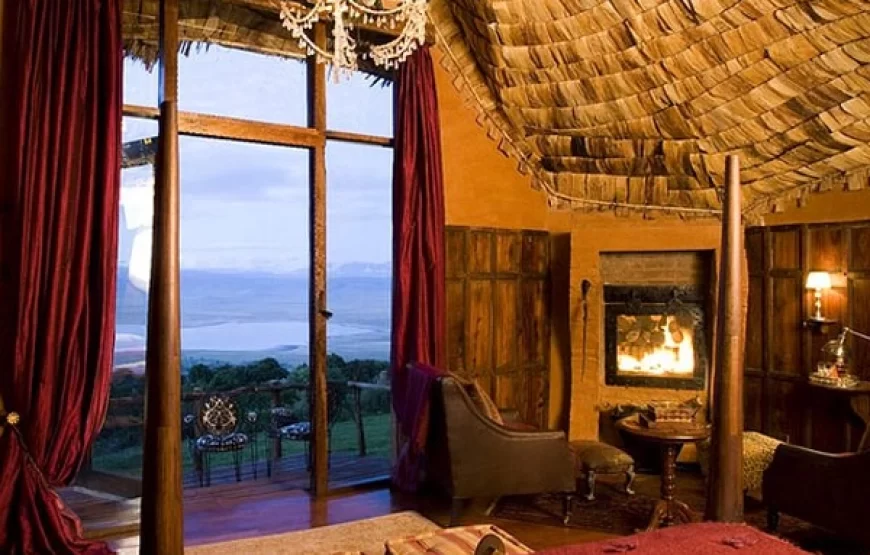
The Ngorongoro Crater Lodge is located in Tanzania on the edge of the world famous “World Heritage Site” of the Ngorongoro Crater.
Food & Drink Each Camp has a central domed dining room/Lounge with welcoming fireplace, crystal, silver and massive wooden platters, treat ever meal as a special occasion – evening log fires flicker between silver screens. An outdoor dining area overlooking the floor of the Crater in each of the suites.
Central dining area/Lounge, Library, Craft and Curio Shop Kart for ferrying luggage/guests to the camp
CONFERENCE FACILITIES: Not available. However, small meetings can be arranged on conditions of room occupancy – a minimum size group in 10 rooms and a maximum size of group in 30 rooms. Flip charts, paper and pens can be arranged prior to arrival
The Ngorongoro Crater Lodge is located in Tanzania on the edge of the world famous “World Heritage Site” of the Ngorongoro Crater. Surrounding the lodge, the Ngorongoro Conservation Area spans 8,300 square kilometres, stretching from the Rift Valley to the Serengeti. The design follows the Maasai mud-and-stick manyatta (homestead) style. The Ngorongoro Crater Lodge is without doubt one of the most architecturally spectacular safari lodges in Africa.
Completely reconstructed, the lodge only re-opened it’s doors in October 1997.
30 private cottages are separated into three camps, North, South and Tree camp where African design is complemented by graceful antiques, grand chandeliers and magnificent hand-carved four poster beds. Each stilted suite has an en-suite bathroom opening onto an outdoor leisure deck with panoramic views over the Crater. Public areas consist of three separate dining areas, a lounge, library, craft and curio shop, and viewing decks.
| Check In | 12:00 pm |
|---|---|
| Check Out | 12:00 pm |